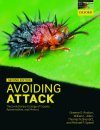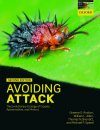Textbook
By: Graeme D Ruxton(Author), William L Allen(Author), Thomas N Sherratt(Author), Michael P Speed(Author)
286 pages, 8 plates with 19 colour photos and colour illustrations; 70+ b/w photos and b/w illustrations
![Avoiding Attack Avoiding Attack]()
Click to have a closer look
About this book
Contents
Customer reviews
Biography
Related titles
About this book
Avoiding Attack discusses the diversity of mechanisms by which prey avoid predator attacks and explores how such defensive mechanisms have evolved through natural selection. It considers how potential prey avoid detection, how they make themselves unprofitable to attack, how they communicate this status, and how other species have exploited these signals. Using carefully selected examples of camouflage, mimicry, and warning signals drawn from a wide range of species and ecosystems, the authors summarise the latest research into these fascinating adaptations, developing mathematical models where appropriate and making recommendations for future study.
This second edition has been extensively rewritten, particularly in the application of modern genetic research techniques which have transformed our recent understanding of adaptations in evolutionary genomics and phylogenetics. Avoiding Attack also employs a more integrated and systematic approach, ensuring that each chapter has a broader focus on the evolutionary and ecological consequences of anti-predator adaptation. The field has grown and developed considerably over the last decade with an explosion of new research literature, making this new edition timely.
Contents
1: Background matching
2: Disruptive camouflage
3: Countershading
4: Transparency
5: Secondary defences
6: Aposematism
7: Müllerian mimicry
8: Advertising elusiveness
9: Batesian mimicry and masquerade
10: Startling predators
11: Deflecting the point of attack
12: Dazzle camouflage
13: Thanatosis
14: Synthesis
Customer Reviews
Biography
Graeme Ruxton is Professor of Evolutionary Ecology at the University of St Andrews, Scotland. He has broad interests in behavioural ecology, but mostly focusses on predator-prey interactions. His main means of investigation is in various types of theoretical modelling, but this is generally linked to empirical data collection in the field or laboratory. His interests are wide in terms of ecosystems and taxonomy too, and he has occasionally published speculations on the ecologies of extinct species. Graeme's interest in predator-prey interactions has grown to include between-species communication more generally and he has a strong interest in how plants interact with animal antagonists and mutualists.
William Allen is an evolutionary ecologist who investigates antipredator defences at macroecological and macroevolutionary scales. His interdisciplinary training at the University of Bristol in human, animal, and machine vision has allowed him to apply novel techniques to understanding the visual ecology of defences in diverse taxa, including felids, reptiles, and ungulates. Other research interests include intraspecific visual signalling in primates and life history evolution. He currently teaches courses on sensory ecology and the evolution of tetrapods.
Tom Sherratt has a broad range of interests in the fields of behavioural and evolutionary ecology, notably predator-prey interactions, the evolution of senescence and the evolution of cooperation. Members of the Sherratt lab conduct both field and laboratory experiments, but they also attempt to develop and test biologically relevant theory. Tom also teaches courses in statistics and computer modelling.
Michael Speed is an evolutionary biologist with longstanding interests in predator-prey relationships, evolution, and phylogenetics. He studied at Leeds University, where he began his work on the evolution of signalling in mimicry systems and currently lectures in evolution and behaviour at the University of Liverpool, where he is also Head of the School of Life Sciences.
Textbook
By: Graeme D Ruxton(Author), William L Allen(Author), Thomas N Sherratt(Author), Michael P Speed(Author)
286 pages, 8 plates with 19 colour photos and colour illustrations; 70+ b/w photos and b/w illustrations
Review of the first edition:
"Despite the very precise and scientifically informative character of the book, which one would expect to reduce the number of serious readers, the generally interesting topic and the pleasant way it is written, make it more likely to be read by a variety of naturalists which like uncovering the amazing secrets of nature."
– European Journal of Entomology, 103: 830, 2006

































